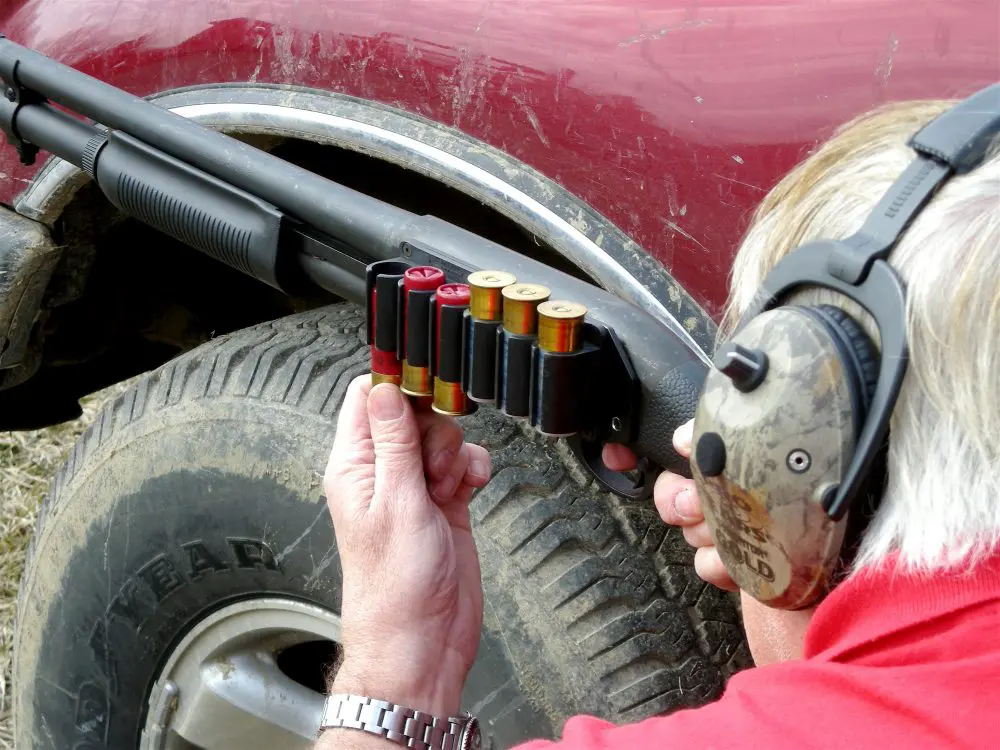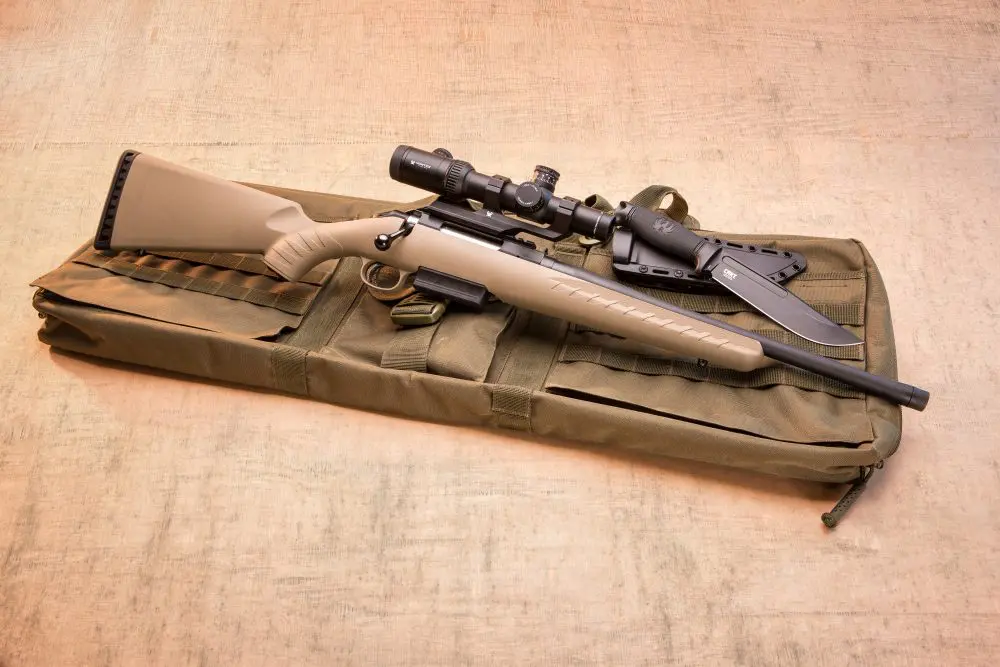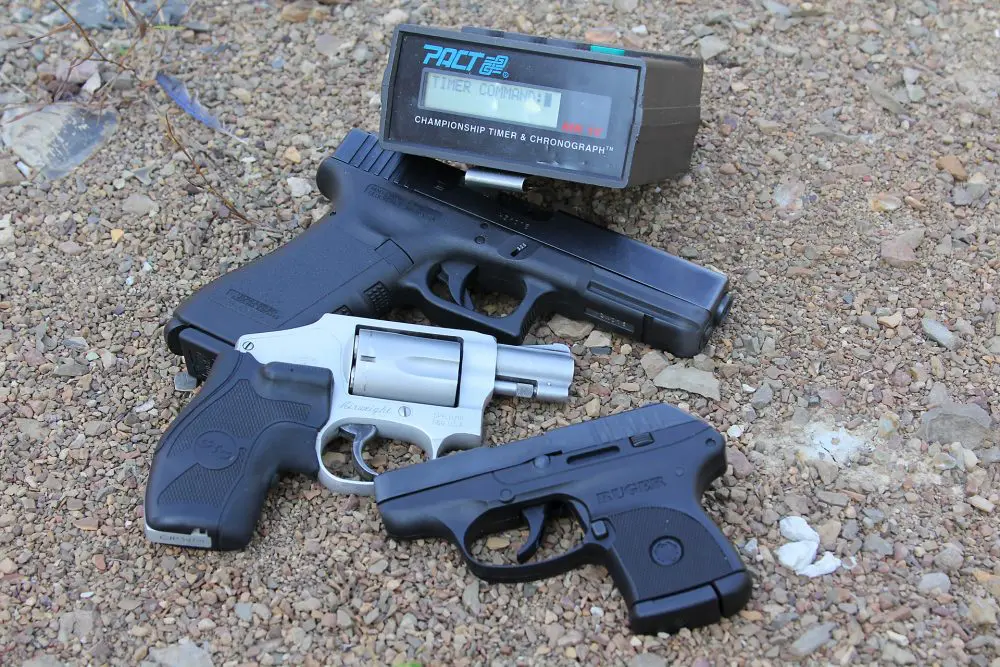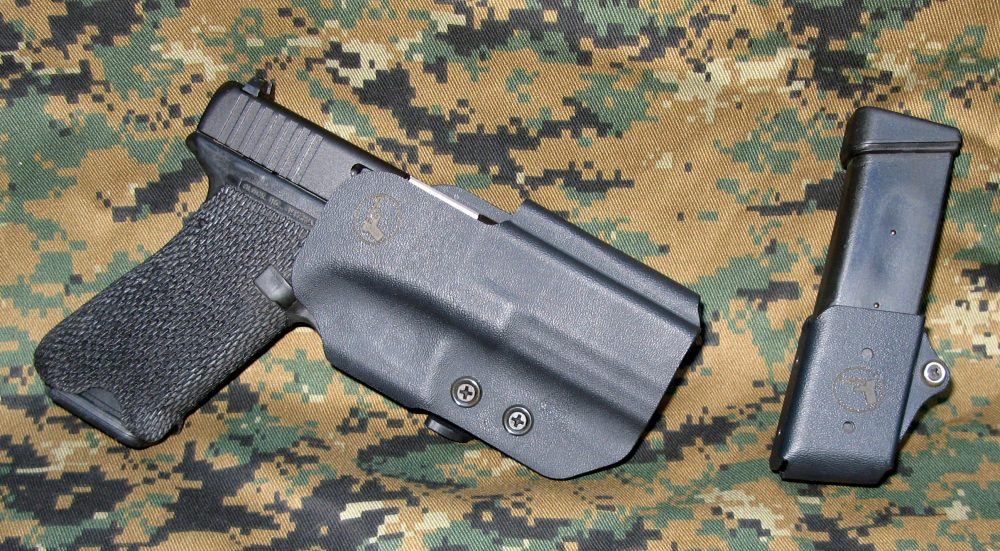Close-quarters gunfighting is much like boxing.
As long as your opponent doesn’t bob, weave, duck, and/or slip your punches, he’s easy to hit. And since point blank—correctly defined—could be literally hundreds of meters, and contact distance—correctly defined—means halitosis distance, for the purpose of this article, “close quarters” is being referenced as the “generic” six-to-ten-foot gunfight.
Ergo, since most trained handgun enthusiasts can pretty much hit their mark out to 20 meters on a one-dimensional paper target, and much farther with a shotgun or carbine, why are there so many more misses than hits in close quarters encounters?
Obviously, under these circumstances, there’s the inevitable “pucker” factor, which causes most people to violate the basics of marksmanship and hit the gas pedal too hard, launching a hail of lead that usually misses its intended mark. As Ross Seyfried said many years ago, “You can’t miss fast enough to catch up.” Or, as the great Bat Masterson put it, you attain first place in a gunfight by employing deliberation, accuracy, and speed—in that specific sequence.
Nowhere was this more evident than in the Loving/Richardson Dodge City barfight in 1879, wherein the latter frantically slip-fired his revolver while Loving actually cleared a malfunction on his single-action Colt—and won the day. All of this occurred at a multiple-witnessed six to 12 feet from each other. Why didn’t they resort to alternate means to resolve the contest once one ran his gun dry and the other’s malfunctioned? I don’t know, since I wasn’t there, wasn’t taking incoming rounds, and don’t engage in the habit of launching footballs on Monday morning.
Suffice it to say that a calm demeanor—the best you can manage under these circumstances—will beat panic-stricken lead-launching every time. Which, as Mister Masterson said, also means not shooting faster than you are capable of hitting. You will be slower reacting for real than you will be on a training range, simply because you’re operating off a visual as opposed to an auditory signal, if nothing else.
The above having been said, and since most people in the game say words to the effect that, “in a fight you will default to your level of training,” it remains only to analyze how you conduct your training to find potential weaknesses therein.
First and foremost—assuming that the trainee is already proficient in both the mechanical operation of the weapon concerned and the basics of accurate delivery of projectiles—are the shape, movement and general manner of deployment of range targets. Square, rectangular or round stationary one-dimensional targets are completely different than those encountered in battle.
Targets should, in this author’s opinion, be of anthropomorphic shape and, on occasion, have erratic human-like motion. If not, the shootist encounters a target that poses a marksmanship problem that is diametrically opposed to reality. The bizarre geometric conundrum encountered is that one-dimensional (flat) static targets are easy to hit at close quarters, but more difficult from a distance. Moving humanoid-shaped targets, however, are the opposite.
The reasons for this, though puzzling, are simple: The flat, even-bordered targets become difficult only at distance because they provide proportionately a smaller overall configuration of which to aim center of mass—irrespective of whether the trigger-man is advancing, withdrawing, stepping laterally or remaining stationary. The target shape itself and its location are constants. His only difficulty factor is to pace his delivery rate of fired rounds and the refinement of his sight picture relative to the target size.
While this also holds true with three-dimensional humanoid-shaped targets, they are—assuming shootist and target movement—ever-changing in size and format, and in fact require faster thought processes as to where to aim when one is closer than from a distance.
If, for example, you always practice on generic IPSC-shaped cardboard, all you have to do is stuff your sights between his triceps or hold in the center of his head, and good trigger control and follow-through will result in A-ring hits. Even if the target is moving laterally—but at an even pace in one direction—you can “ambush” it and it will, in essence, move into your bullet.
Dancing a ballistic cha-cha in a close-quarters barroom gunfight, however, almost reverses the laws of triggernometry: the more you dance, the quicker the target changes size and shape. And the more you miss, because the background opens up inversely proportionate to a farther target. This means you also kill more bystanders, because your visual cortex can’t keep pace with the rapid photographic display of the background that your optical cameras are photographing.
Once you’re off the deck of the carrier, the jet motors have plenty of thrust to keep you aloft. Excessive unnecessary use of afterburners will only run you out of fuel faster, and excessive trigger-finger speed will run you out of blood faster. Either way, you crash and burn.
Vary your training target systems and learn to control your emotions when under duress.
And tell your boxing manager not to match you against a pugilist with lightning-fast reflexes. You’ll never hit the target…
[Louis Awerbuck is Director of the internationally acclaimed Yavapai Firearms Academy. Course information and schedules are available at their website at www.yfainc.com.]





